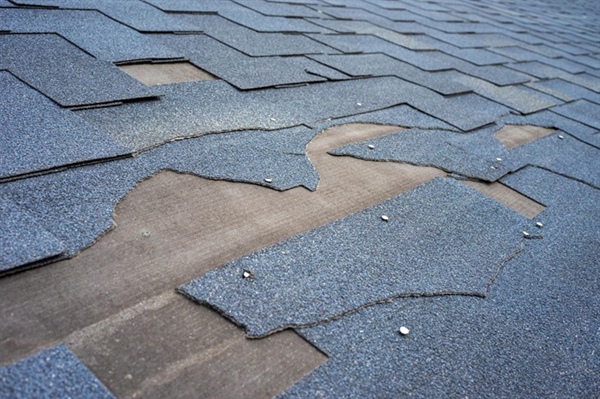The Impact of Storm Damage on Different Roofing Materials

Storms bring hail, high winds, and heavy rain—all of which put roofing materials to the test. Asphalt shingles can lose granules and lift at the edges, exposing the underlayment.
Metal roofing, while effective against moisture due to its interlocking seams, may dent from hail or suffer from loose fasteners during strong wind events. Understanding how each material responds to storm damage helps guide effective repairs and extend the roof's life. Acreage Restoration in Zimmerman, MN, tracks the performance of these systems across various climates.
This article addresses five key questions, offering practical insights for building and roofing professionals. Our experts break down the details you need to know.
Storm Damage Resistance: Comparing Asphalt Shingles vs Metal Roofing
Asphalt shingles consist of fiberglass or organic mat coated in asphalt and mineral granules.
Under hail impact, granules dislodge, reducing UV protection and waterproofing. High winds can lift shingle edges, allowing water infiltration beneath the surface. Shingle systems rely on adhesive strips and nails; when these fail, the membrane is vulnerable to moisture and wind uplift.
Metal roofing uses steel or aluminum panels with protective coatings. Its smooth surface sheds hail more effectively, though dents can occur under large hailstones. Panels interlock and attach via screws or clips; if fasteners back out in sustained high winds, panel movement can compromise weather tightness. Metal’s lower coefficient of thermal expansion also means fewer material stresses over temperature swings.
Testing shows metal panels typically endure higher wind speeds before failure, while asphalt systems are more prone to hail-induced wear. Proper installation—including secondary underlayment and reinforced fasteners—can mitigate storm damage in both systems.
Tile Roof Vulnerabilities in Severe Weather Conditions
Ceramic and concrete tiles are heavy and rigid, offering excellent UV resistance and longevity. However, their brittleness under impact makes them susceptible to cracking when struck by hail or falling debris. Cracked tiles allow water ingress to the underlayment, risking rot in the decking below.
Wind uplift poses a threat when tiles lack secure fastening. Interlocking designs enhance wind resistance, but extreme gusts can cause tiles to slide laterally, potentially breaking them or stripping accessory components, such as ridge caps. Proper clip installation and underlayment attachment are essential to prevent wind-driven displacement.
Freeze-thaw cycles can exacerbate micro-cracks in clay tiles, leading to spalling. Regular inspections after storms help identify damaged tiles early, preventing leaks and structural damage.
Performance of Flat Roofs Under Heavy Rainfall and High Winds
Flat roofs, typically covered with single-ply membranes (PVC, TPO, EPDM) or built-up roofing (BUR), rely on seamless installation and adequate drainage slopes to prevent water accumulation. Under heavy rainfall, ponding water stresses membrane seams and flashings, accelerating material degradation and promoting algae growth that can puncture the surface.
Wind uplift on low-slope roofs can cause the membrane edges to peel back if the perimeter flashing or adhesives are compromised. Mechanical fastening patterns and ballast systems must meet local wind-load requirements. Seals around roof penetrations and drains are common failure points during wind-driven rain.
Designing for a minimum 1/4-inch-per-foot slope and installing overflow scuppers reduce ponding. Reinforcing membrane transitions at walls and curbs with additional plies or adhesives enhances wind resilience.
Maintenance Practices to Enhance Roofing Material Resilience
Routine inspections, conducted twice yearly and after major storms, detect early signs of wear. For asphalt shingles, monitor granule loss and reseal loose edges with polymer-modified roofing cement. Metal roofs benefit from checking fastener torque and recoating areas where paint has chipped to prevent corrosion.
Tile roofs require clearance of debris between tiles and gutters to avoid water backup and underlayment saturation. Replace cracked or slipped tiles promptly and verify that clips and mortar beds remain intact at hips and ridges.
Flat roofs demand regular cleaning of drains and scuppers to prevent pooling. Reseal seams with compatible membrane adhesives every five to seven years and apply reflective coatings to reduce thermal cycling stresses.
Selecting the Best Roofing Material for Storm-Prone Regions
The material choice hinges on local hail, wind, and precipitation patterns. Asphalt shingles offer cost efficiency and ease of repair but have shorter lifespans in areas prone to hail. Metal roofing offers high uplift ratings and minimal puncture risk, but it carries a higher upfront cost.
Tile roofs excel in wind-borne debris resistance and fire protection, yet they require robust structural support due to their weight. Flat membranes are suitable for low-slope designs but require meticulous detailing around penetrations to prevent leaks. Hybrid options—such as synthetic slate or modified bitumen with enhanced modifiers—strike a balance between durability and budget.
Local building codes and insurance guidelines inform wind-load and impact-resistance requirements. For expert guidance tailored to your region, reach out to our experts.
Why Choose Acreage Restoration for Your Roofing Solutions
Acreage Restoration brings over a decade of storm-damage repair expertise to Zimmerman, MN. Our certified inspectors evaluate material-specific vulnerabilities, from granule loss in shingles to dent resistance in metal panels. We partner with leading manufacturers to source products that meet or exceed local wind and hail standards.
Call us at 612-401-5911 or visit 13279 9th Ave S, Zimmerman, MN 55398, for a no-obligation assessment. For detailed consultations and service requests, contact us today and safeguard your roof against the next storm.